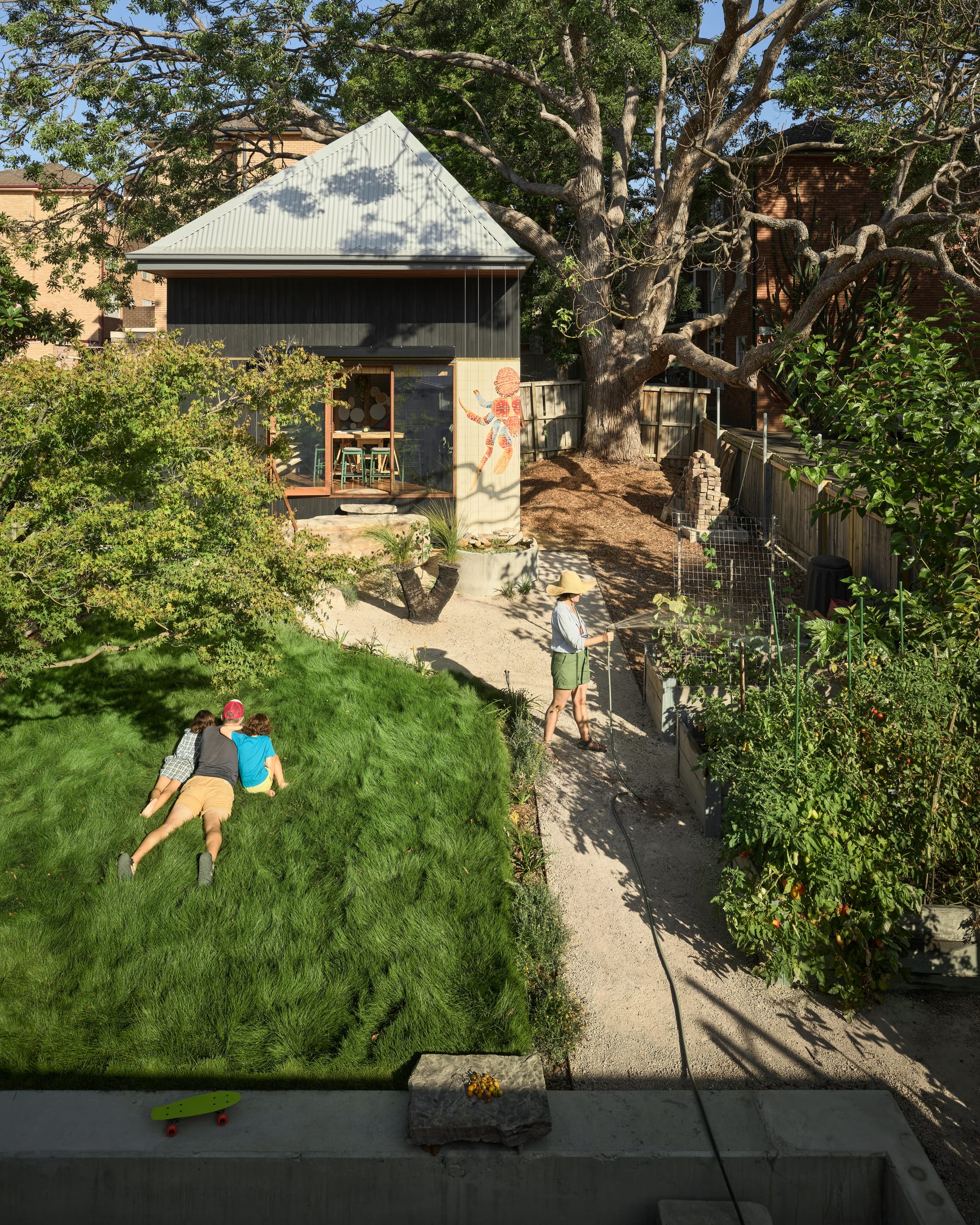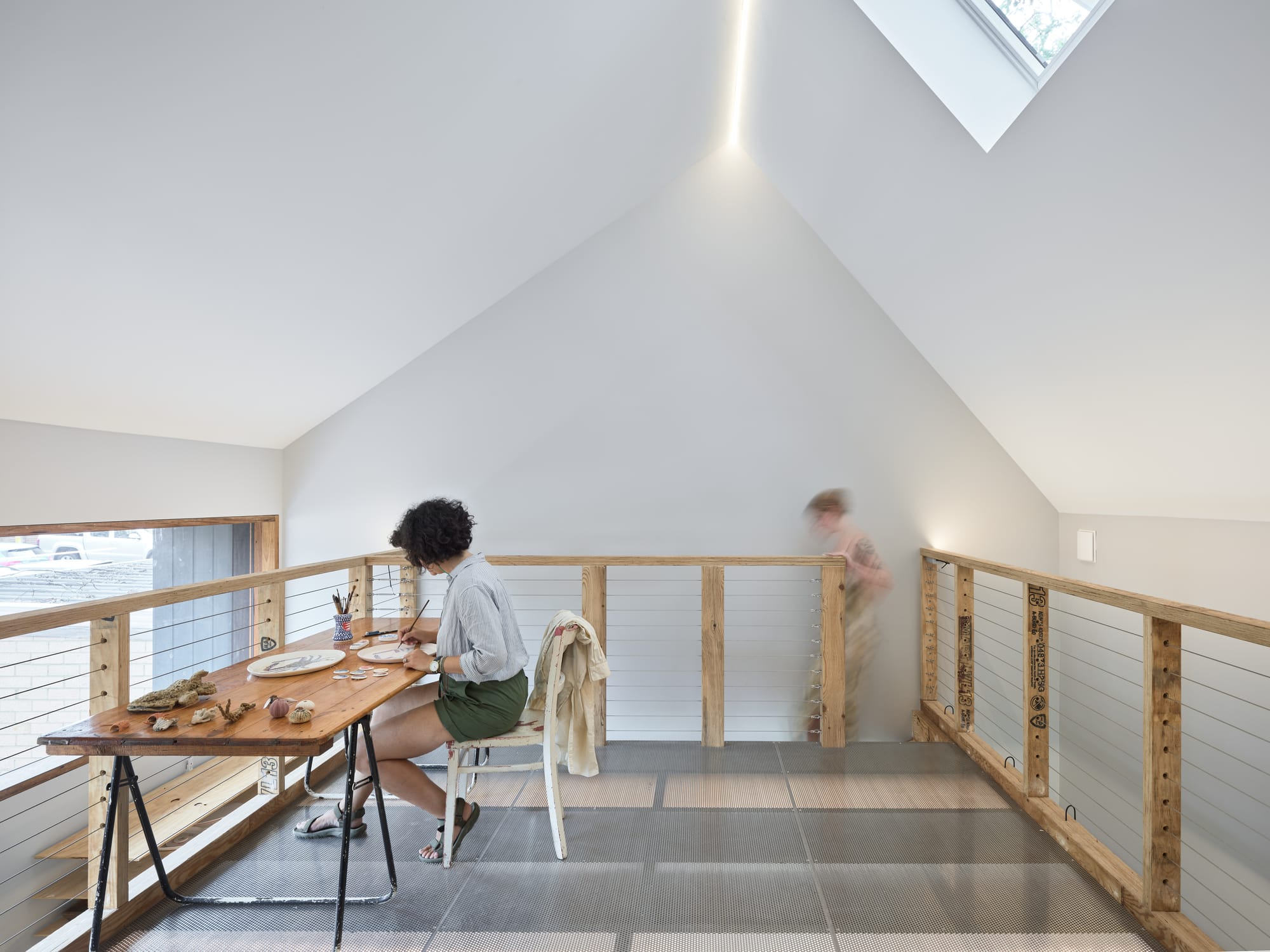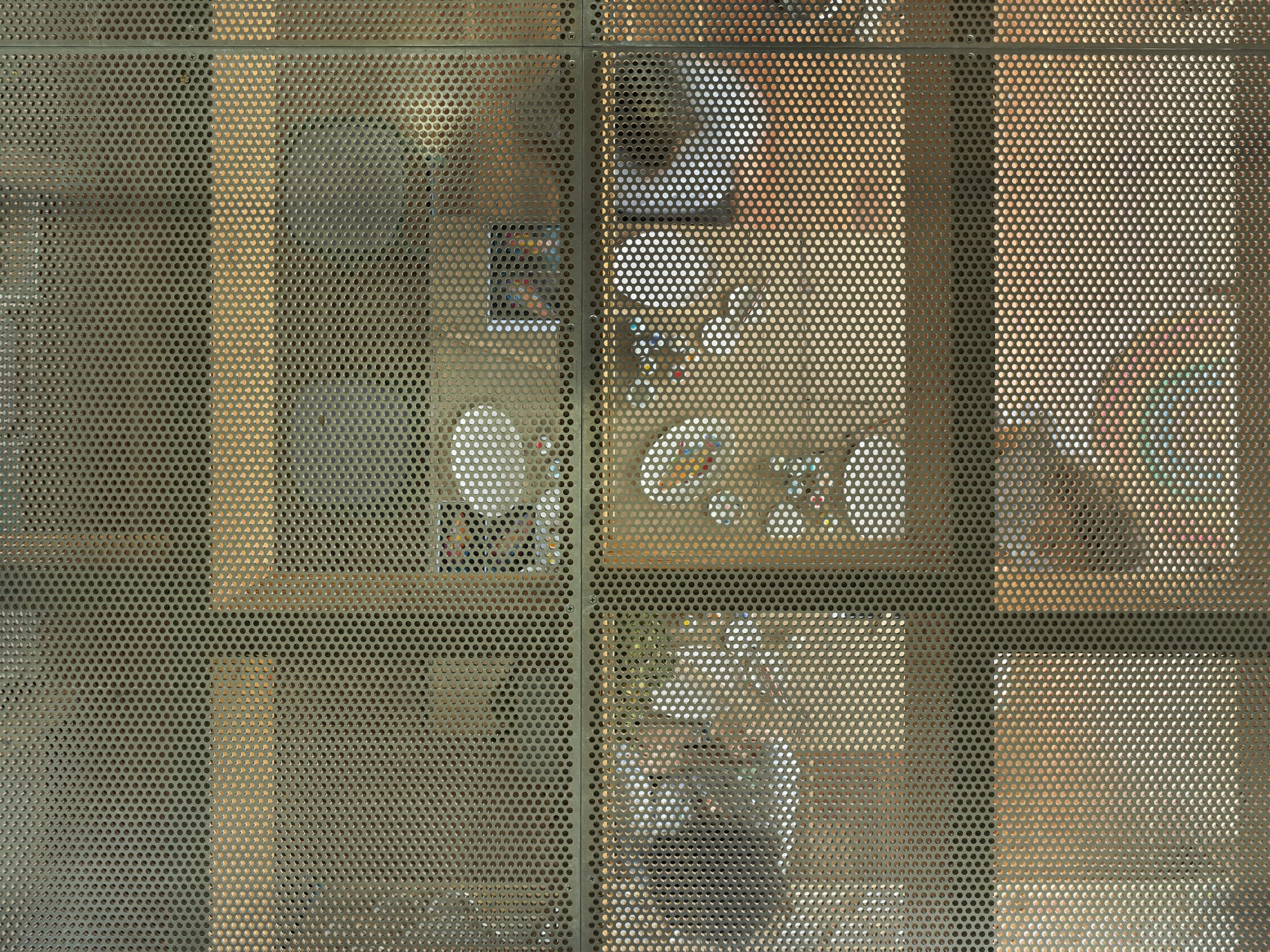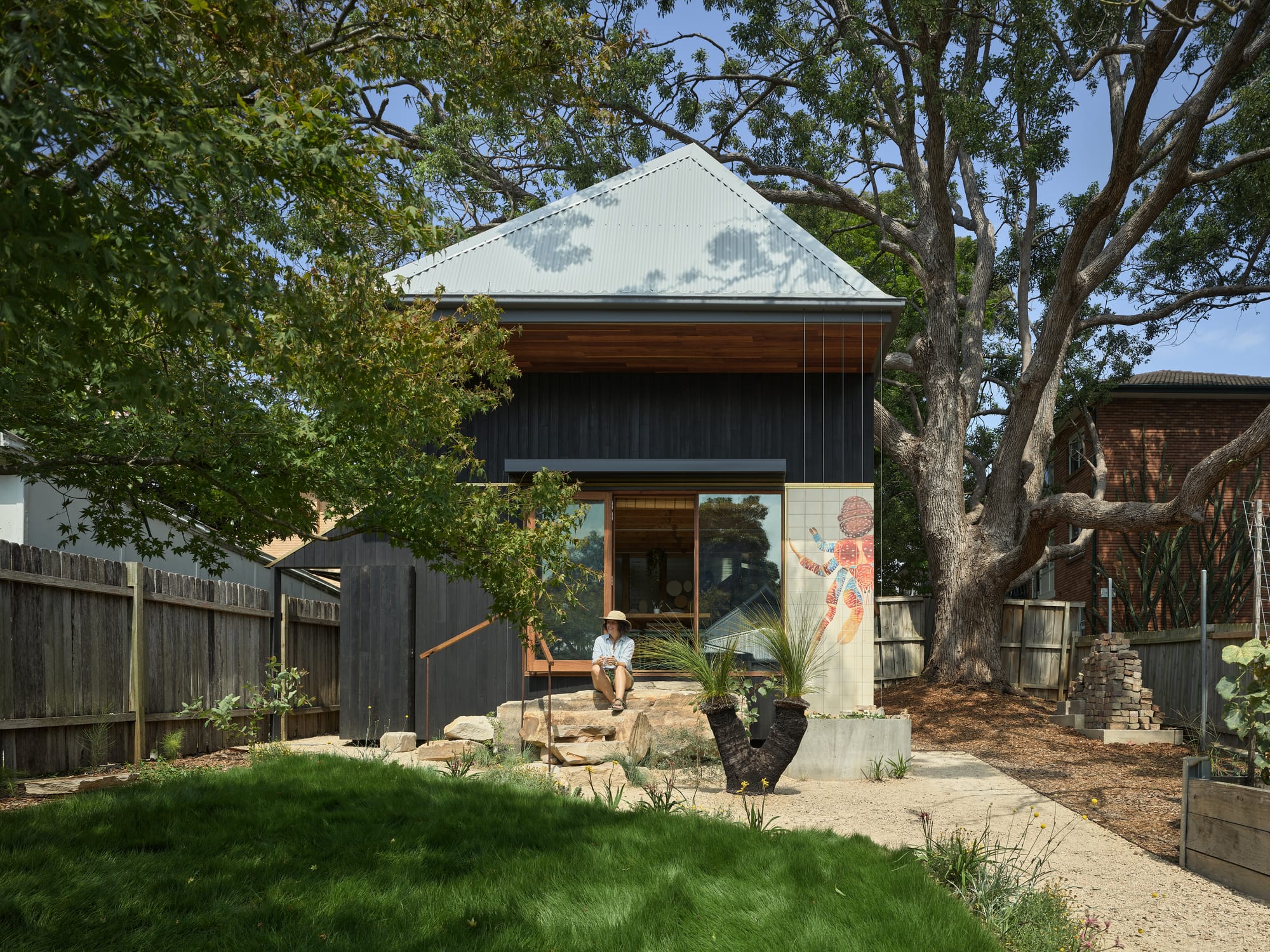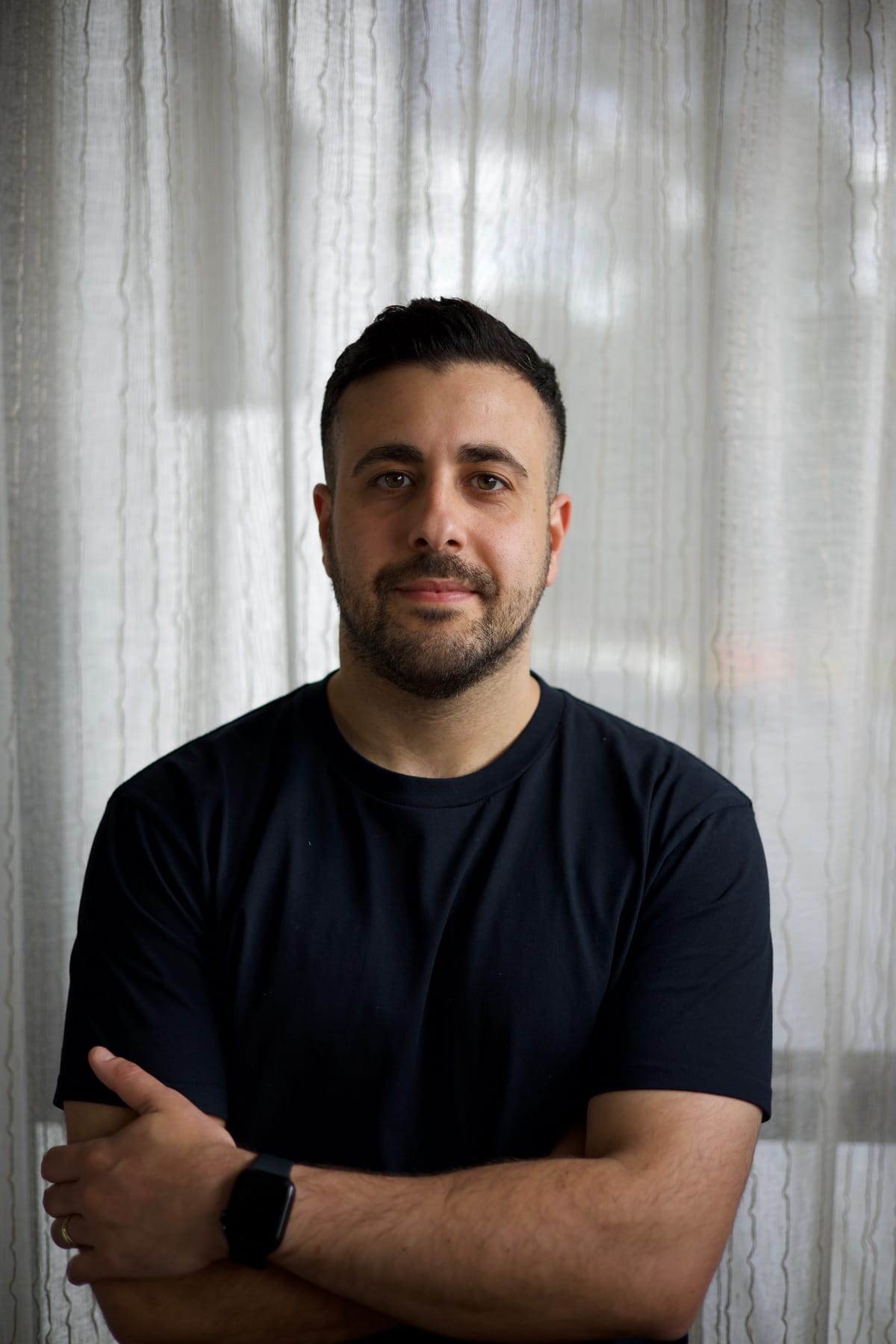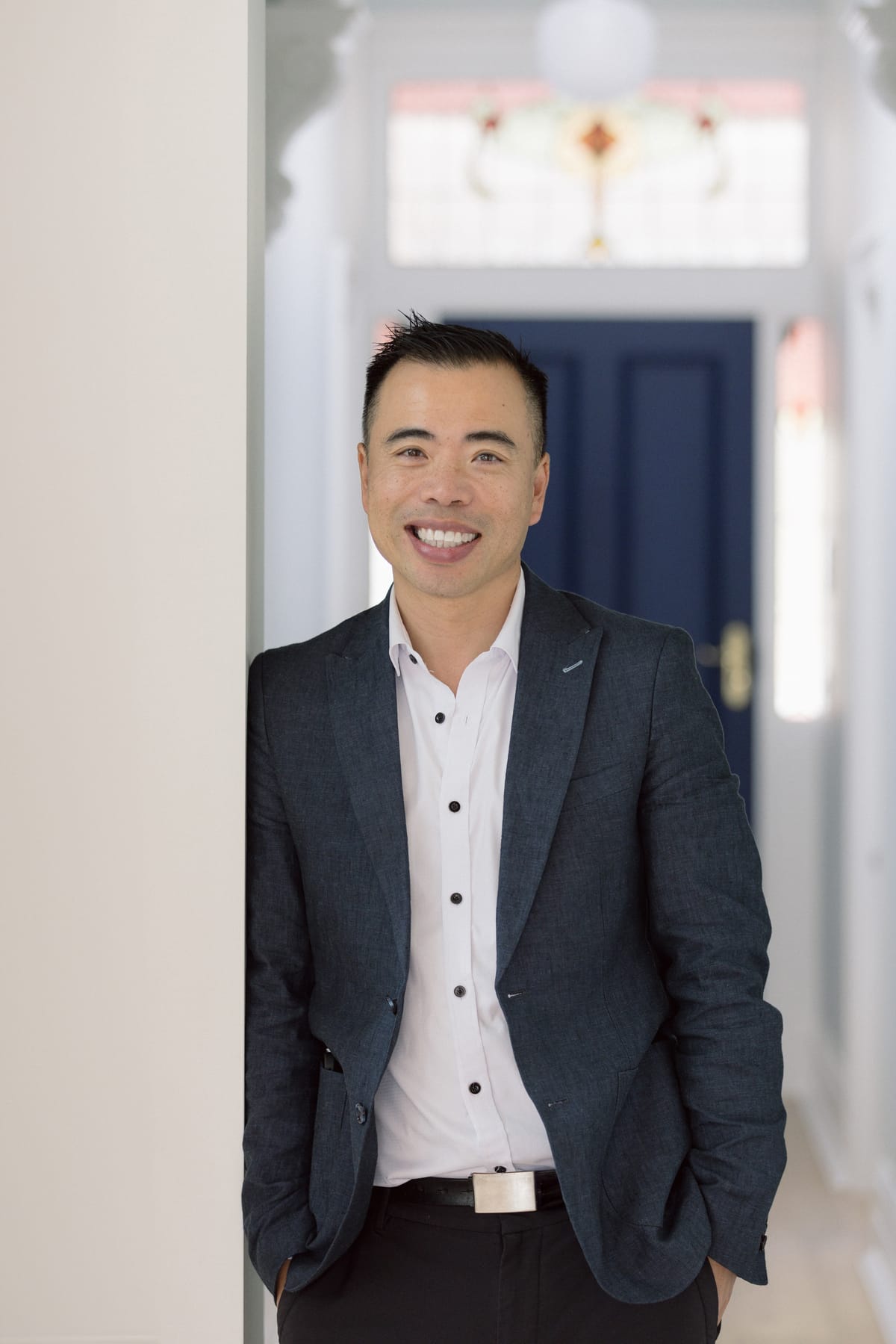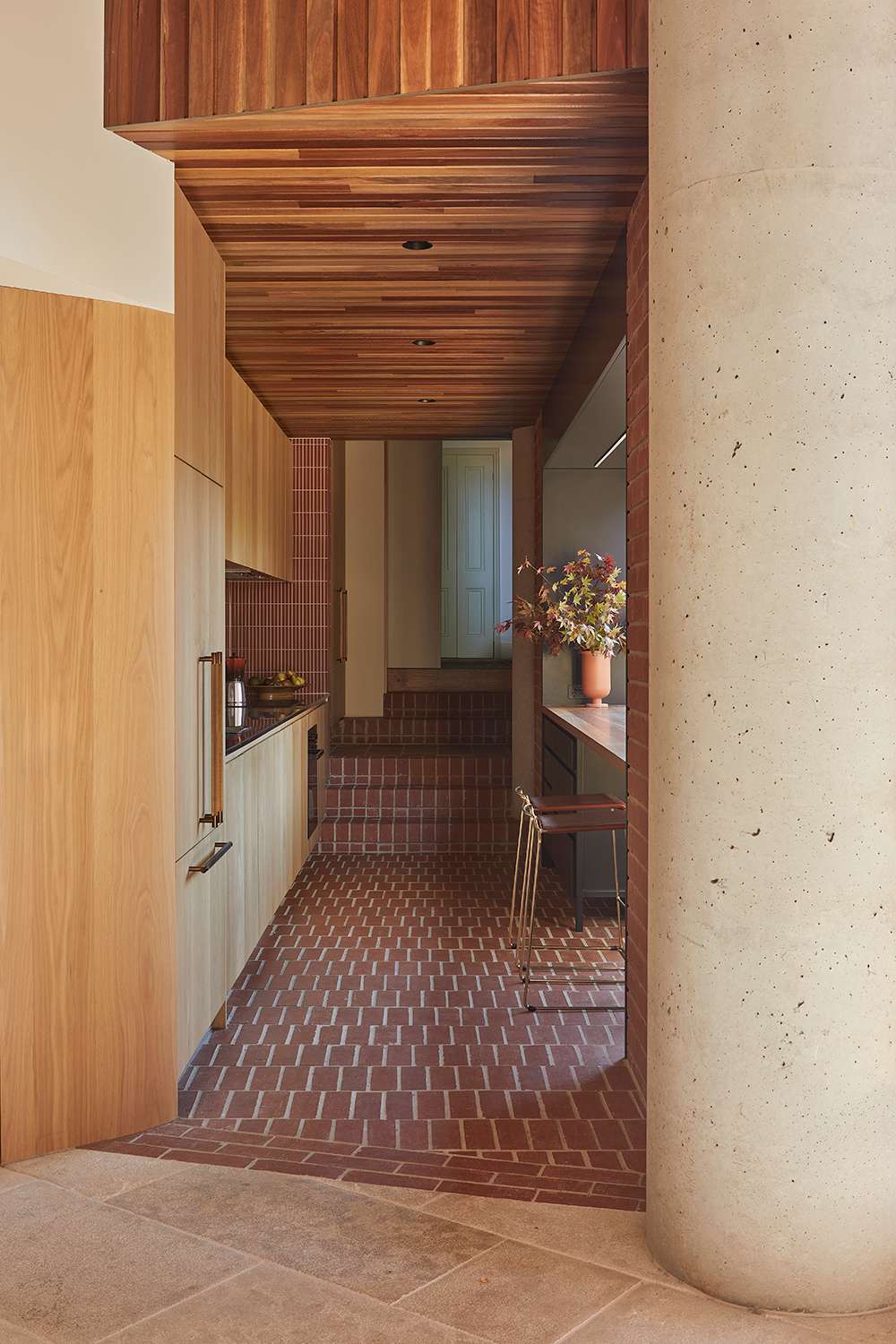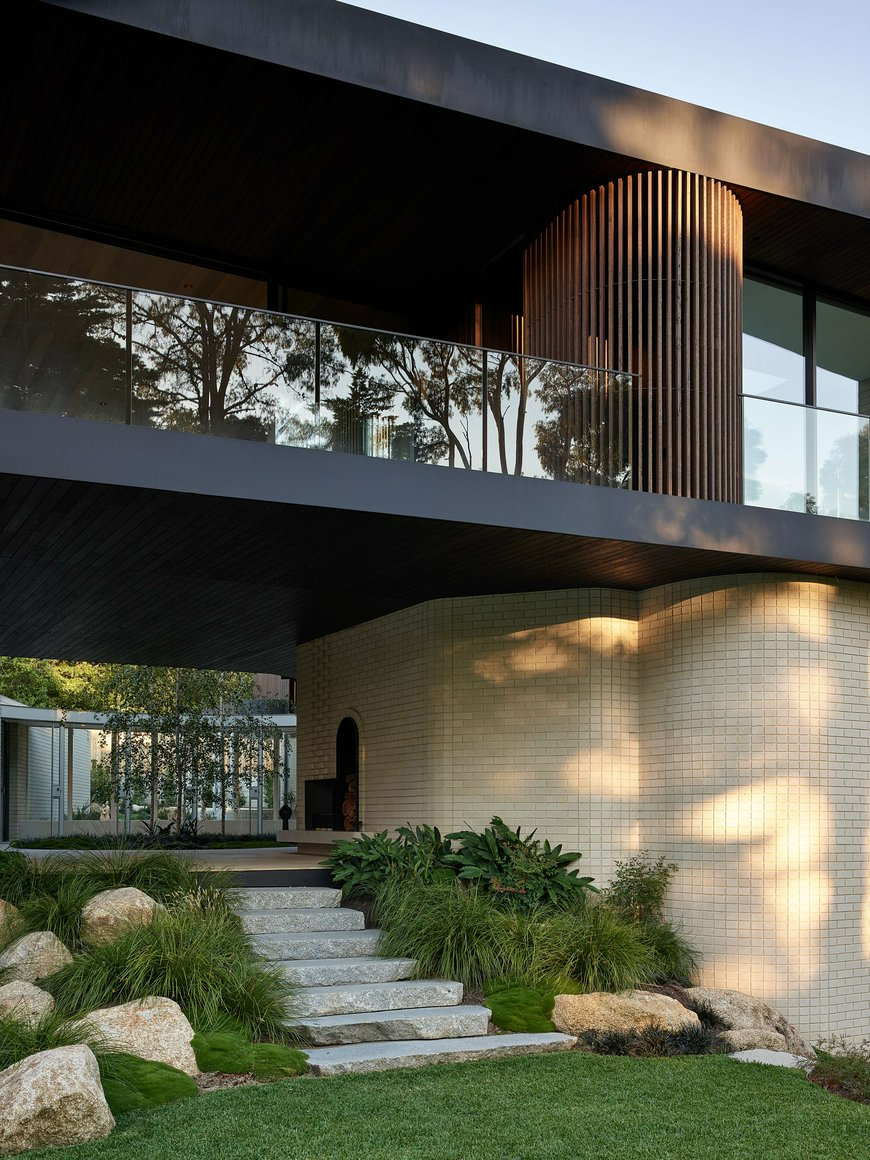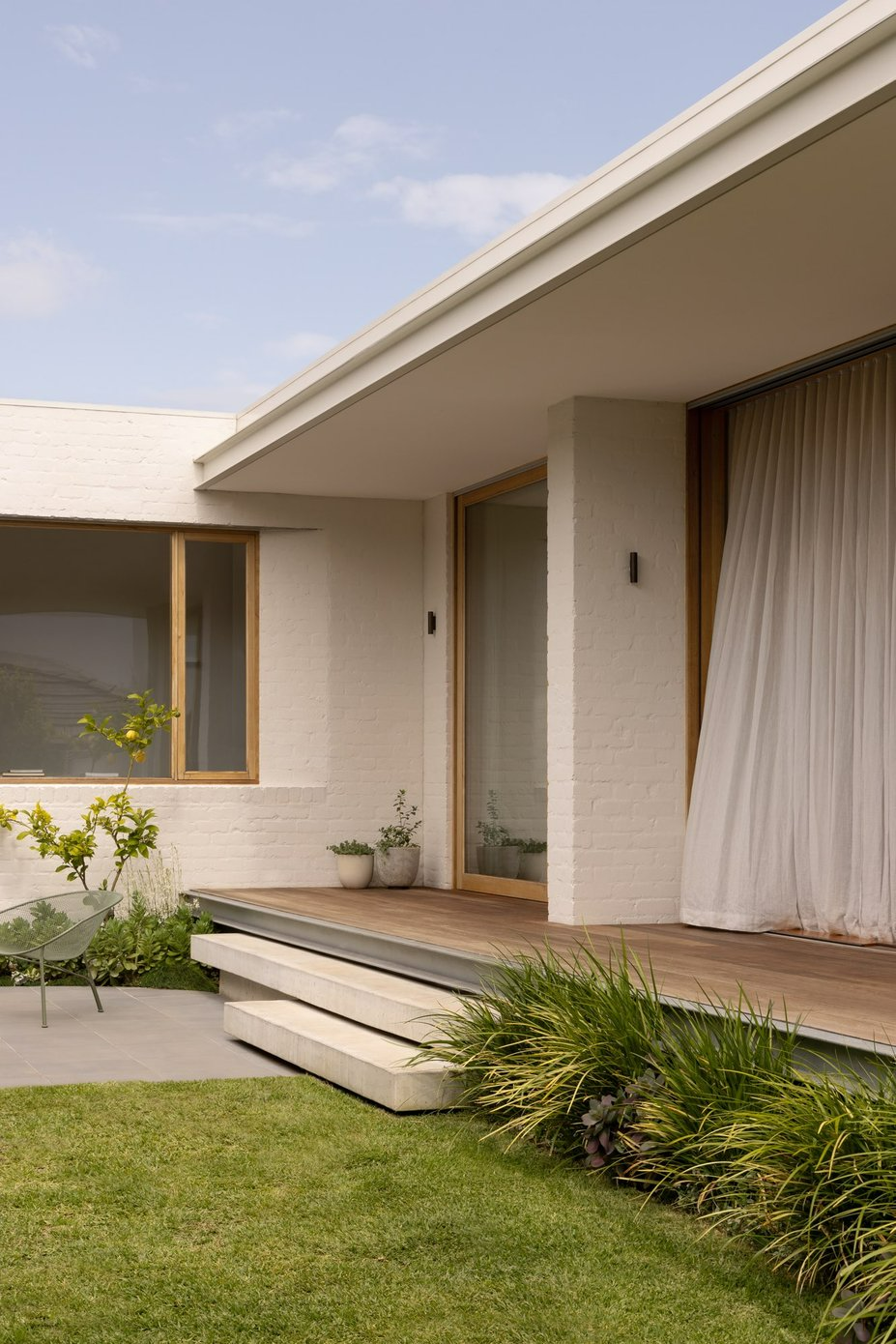Coconut Crab is the environmentally regenerative ceramic studio for Casa Adams Fine Wares, peacefully nestled underneath the tree canopy in the backyard of their family home in Inner West Sydney. Designed in collaboration between client and owner, Casa Adam Fine Wares, Alexander Symes Architect and Landscape Architect Jason Monaghan, the studio represents Casa Adam's aim to encourage preservation and inspire curiosity of marine life through the detailed, hand-made porcelain plates crafted and painted on site. The studio has been carefully designed to function as a base for ceramic production, educational workshops and business administration, regularly hosting educational workshops and open studios with the aid of marine biologists for their large global following.
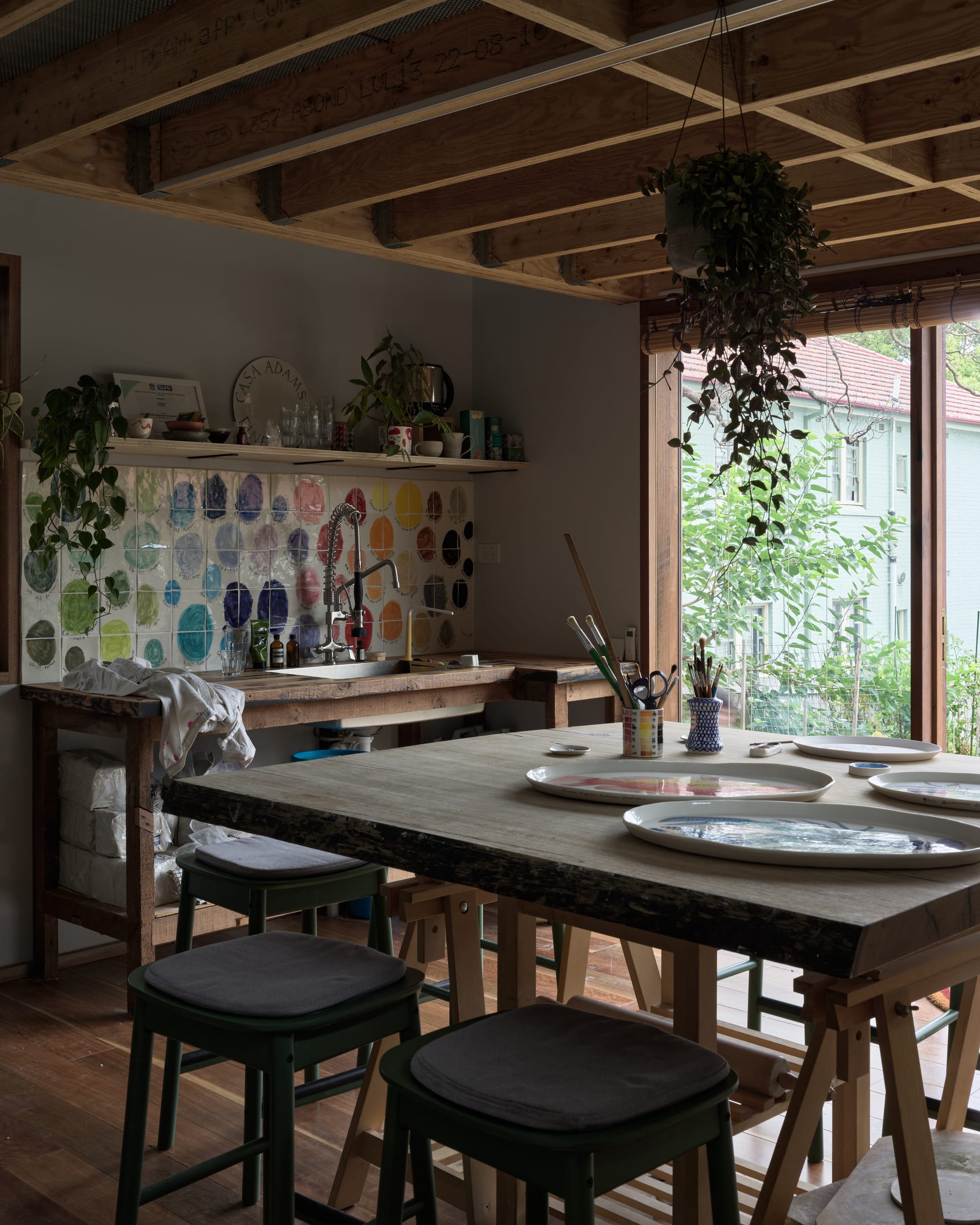
The studio was named after the Coconut Crab, the largest terrestrial crab, which measures up to 1m wide, can climb trees, is highly intelligent and lives up to 60 years. The Coconut Crab is considered vulnerable, and whilst they thrive in remote and unpopulated islands in the Indo-Pacific, they are at risk of being over-harvested and threatened by changing climates. After its namesake, Coconut Crab has been designed with sustainability and conservation in mind. The studio has an embodied energy of 54.76 tonnes of CO2e and is carbon negative by 8195 tonnes of CO2e over a 50 year life cycle assessment period as a result of onsite renewables and carbon offsets created with each ceramic sale. This means that the studio offsets its embodied energy by 149 times over 50 years.
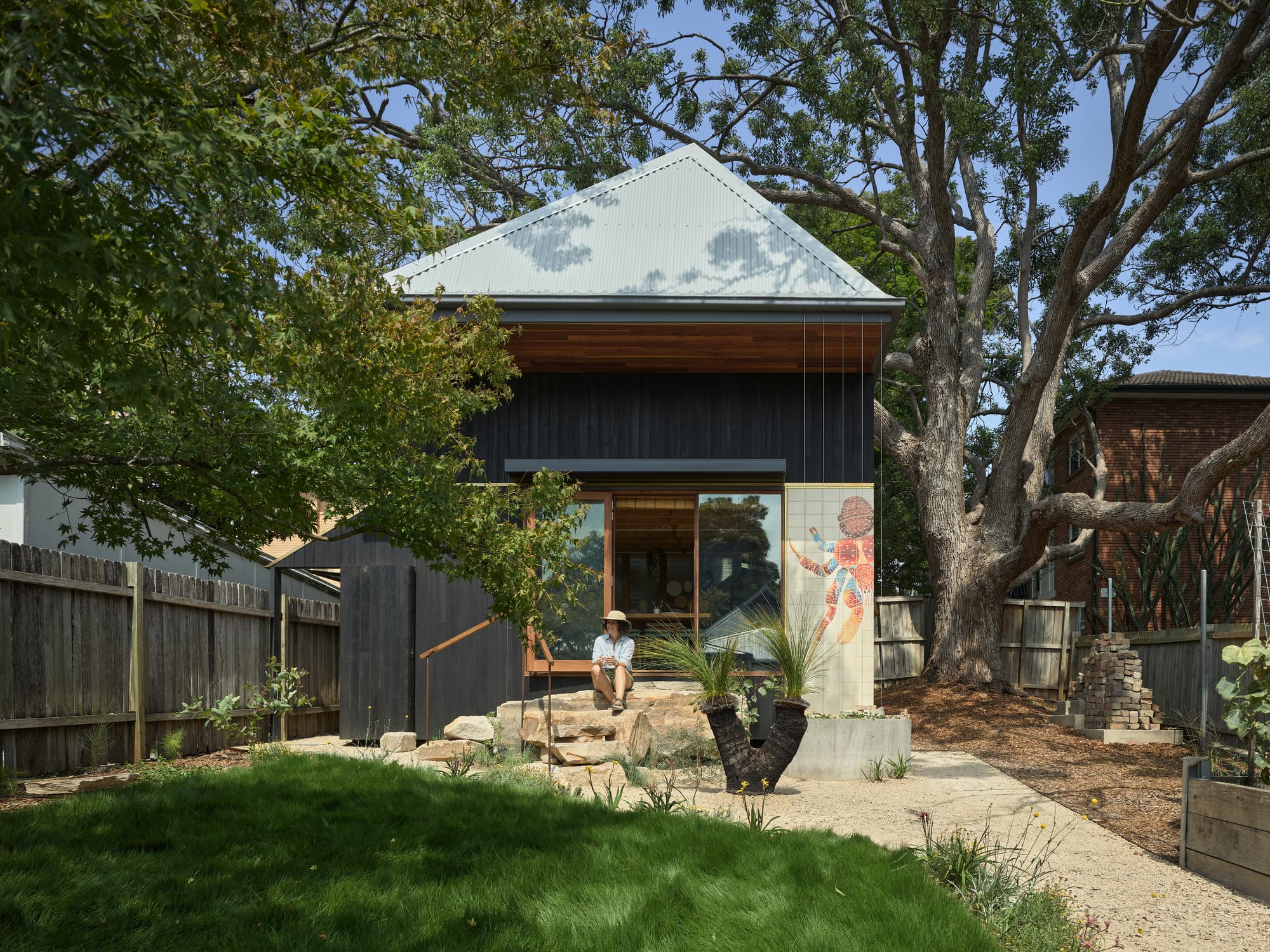
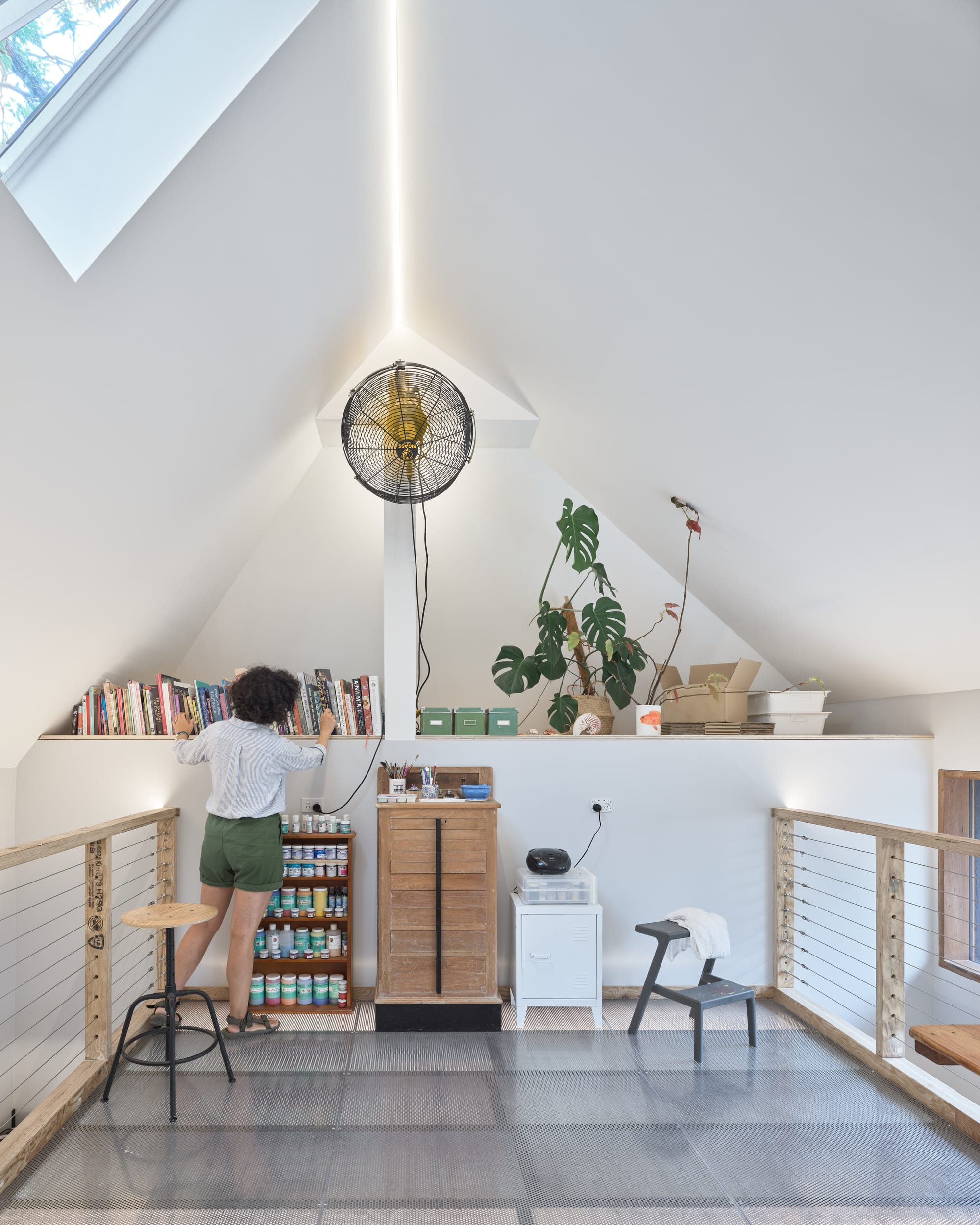
Additionally, the project focuses on tangible design features that contribute to the overall sustainability and conservation measures of the studio, with a dematerialisation strategy central to this approach. An exposed perforated aluminium upper floor, stairs and handrail with no additional finishes and exposed services lean into the method of dematerialisation, reducing outputs during production of materials and finishes. The studio occupies an efficient two-storey square shape which not only maximises invaluable floor space for the painting, administration, packing and photography of products, but required minimal building materials.
The studio envelope is small, nestled underneath the tree canopy in the back of Casa Adam's family backyard. The footprint of the studio was specifically catered to the root structure of the tree, with screw piles locations based off the locations of main root systems, in order to ensure the continued thriving of the existing rear tree.
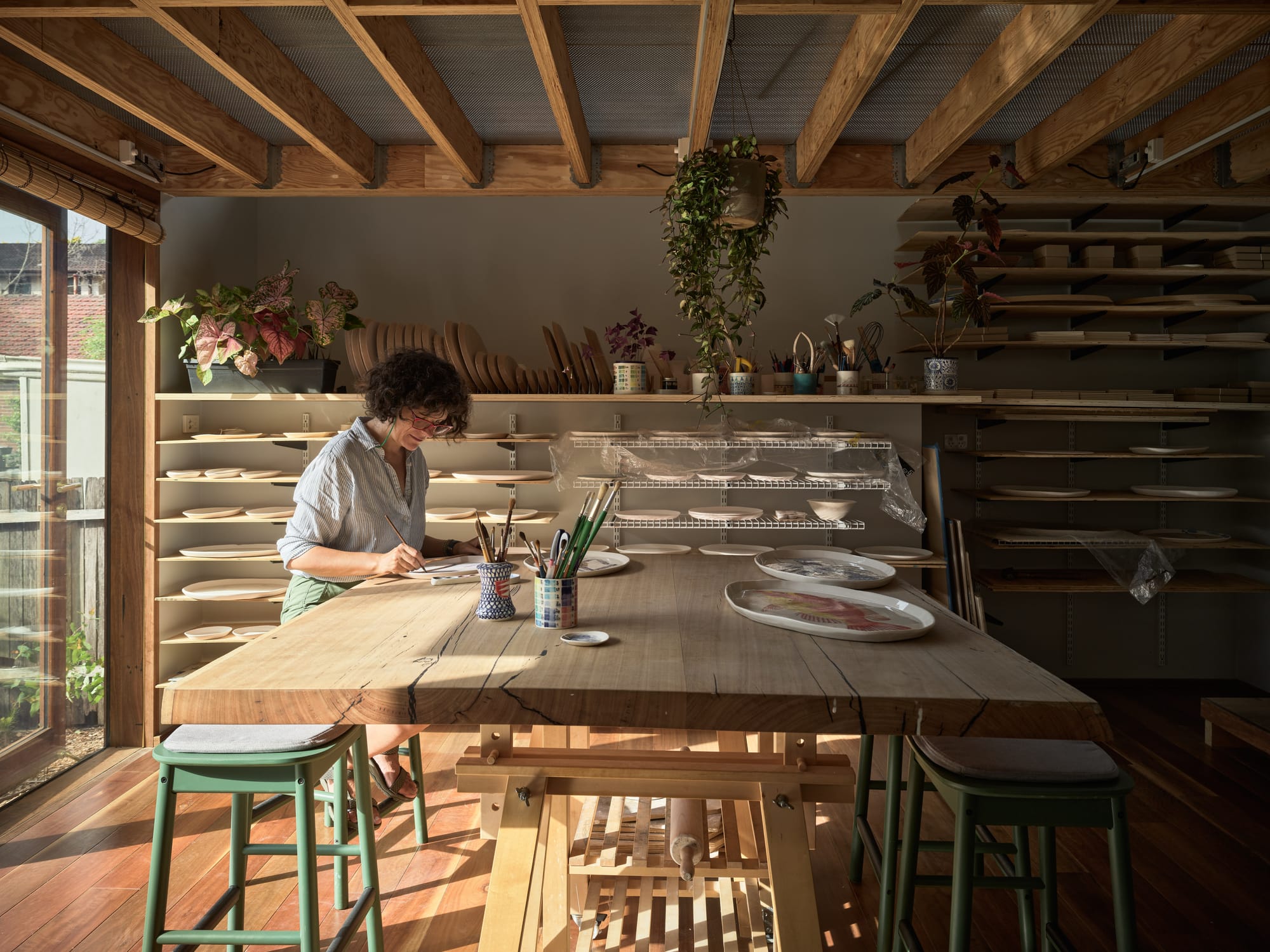
The studio was built with Passive House principles and passive solar design principles in mind, which prioritised a high degree of thermal comfort year-round whilst minimising associated carbon footprint and operational costs. By choosing to separate the studio from the main family home, neither structure has compromised access to the yard vistas, light or ventilation. The structures minimal depth and perforated upper floor allows for greater cross ventilation and light access from the yard, whilst a South facing solar skylight allows hot air to escape the dwelling. Harsh afternoon sun from the West is combated with the overhead tree canopy, external blinds and abundant insulation.
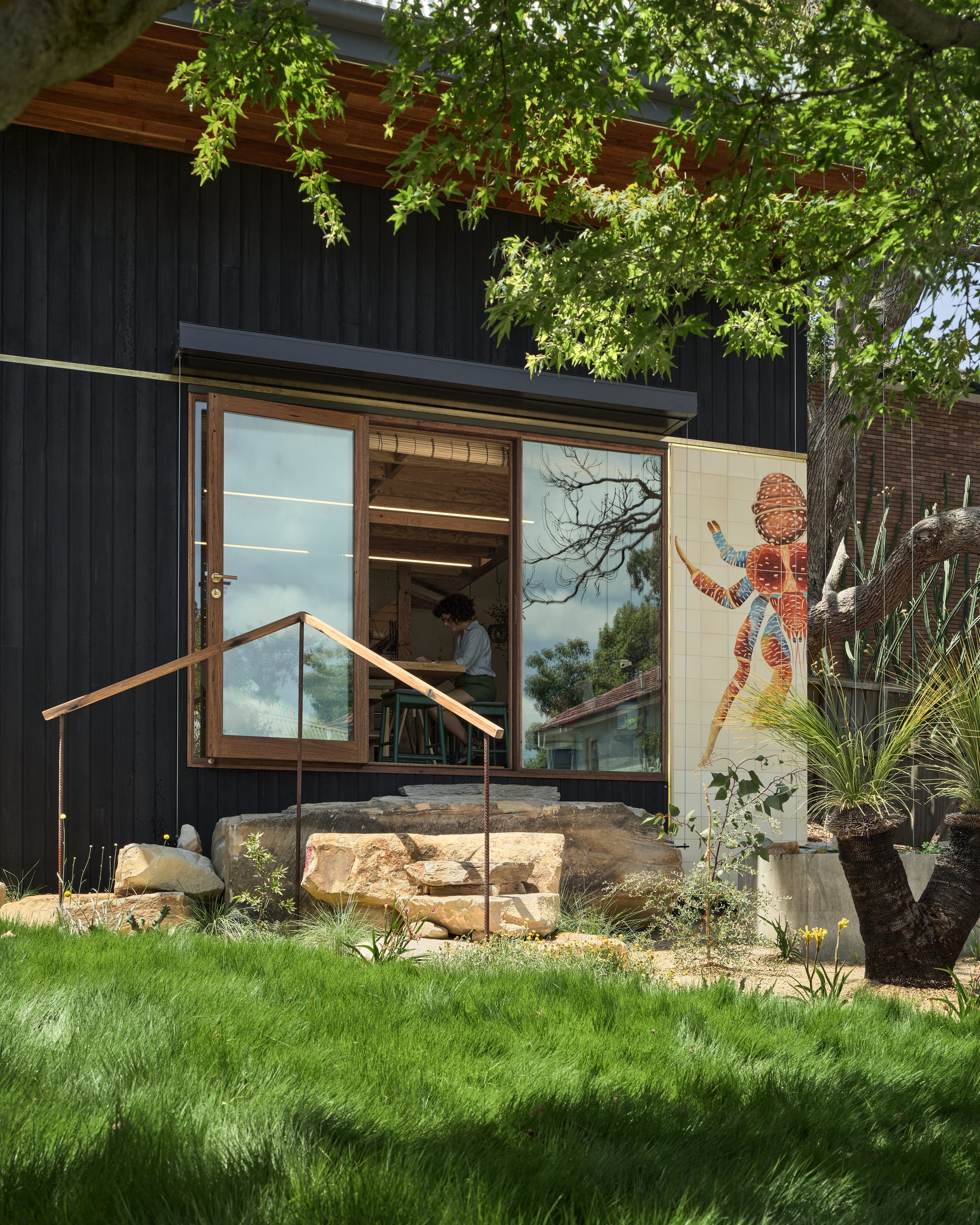
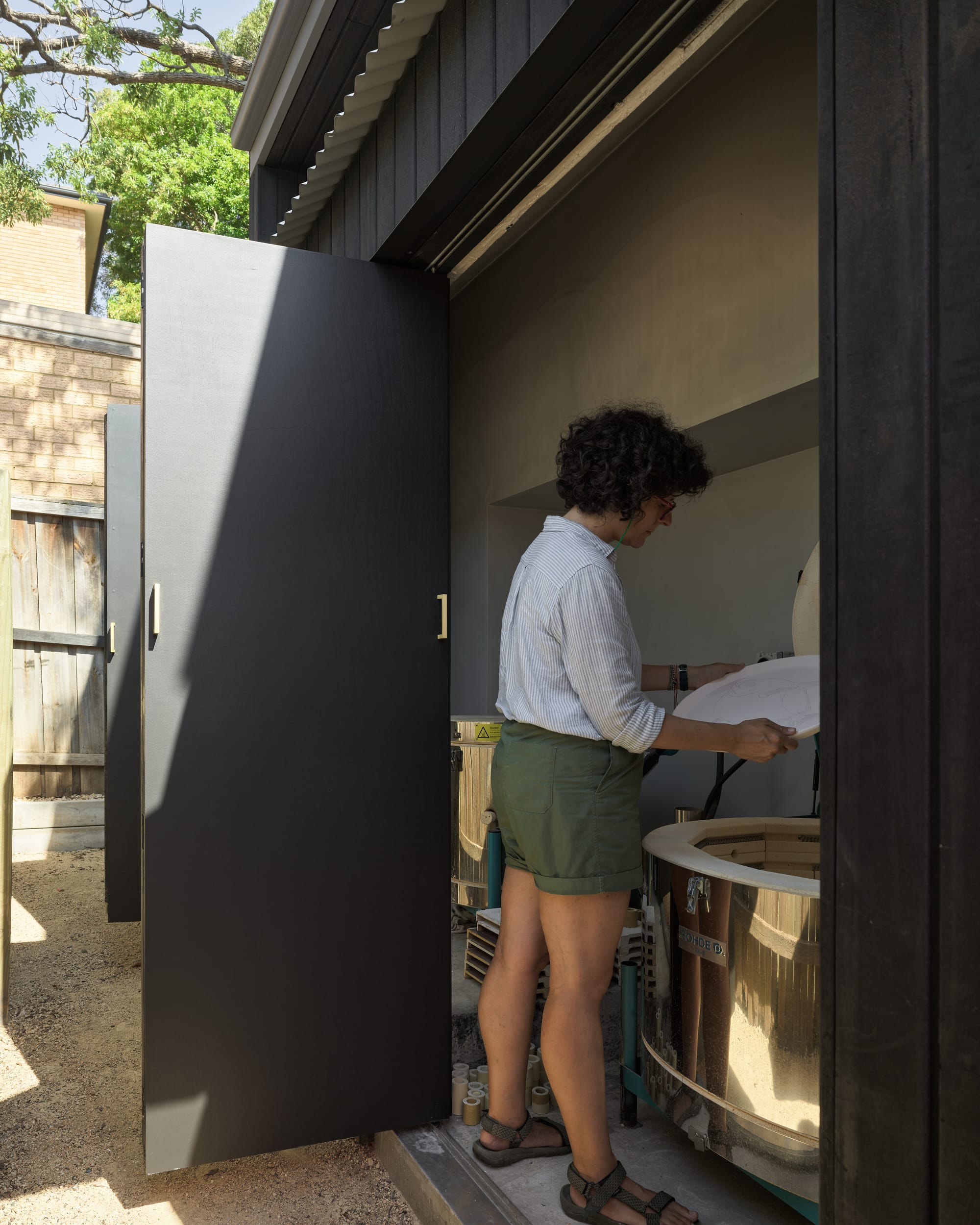
Commitment to sustainability continues outside the studio, with the dwellings sharing a native garden that supports vulnerable endemic frog, bird and insect species, who also enjoy the backyards rainwater retention pond . The clients have also planted many native species, including a Grass Tree 'Gadi', gum trees, hakeas, wattles and endemic grasses, as well as a thriving edible garden. A 7kW solar system was installed to the family home to maximise solar collection and offset the energy consumption of the home and studio, with the panels predicted to produce 85% of the demand of the studio operations, including kilns (8400kWh produced versus 9864kWh consumed).
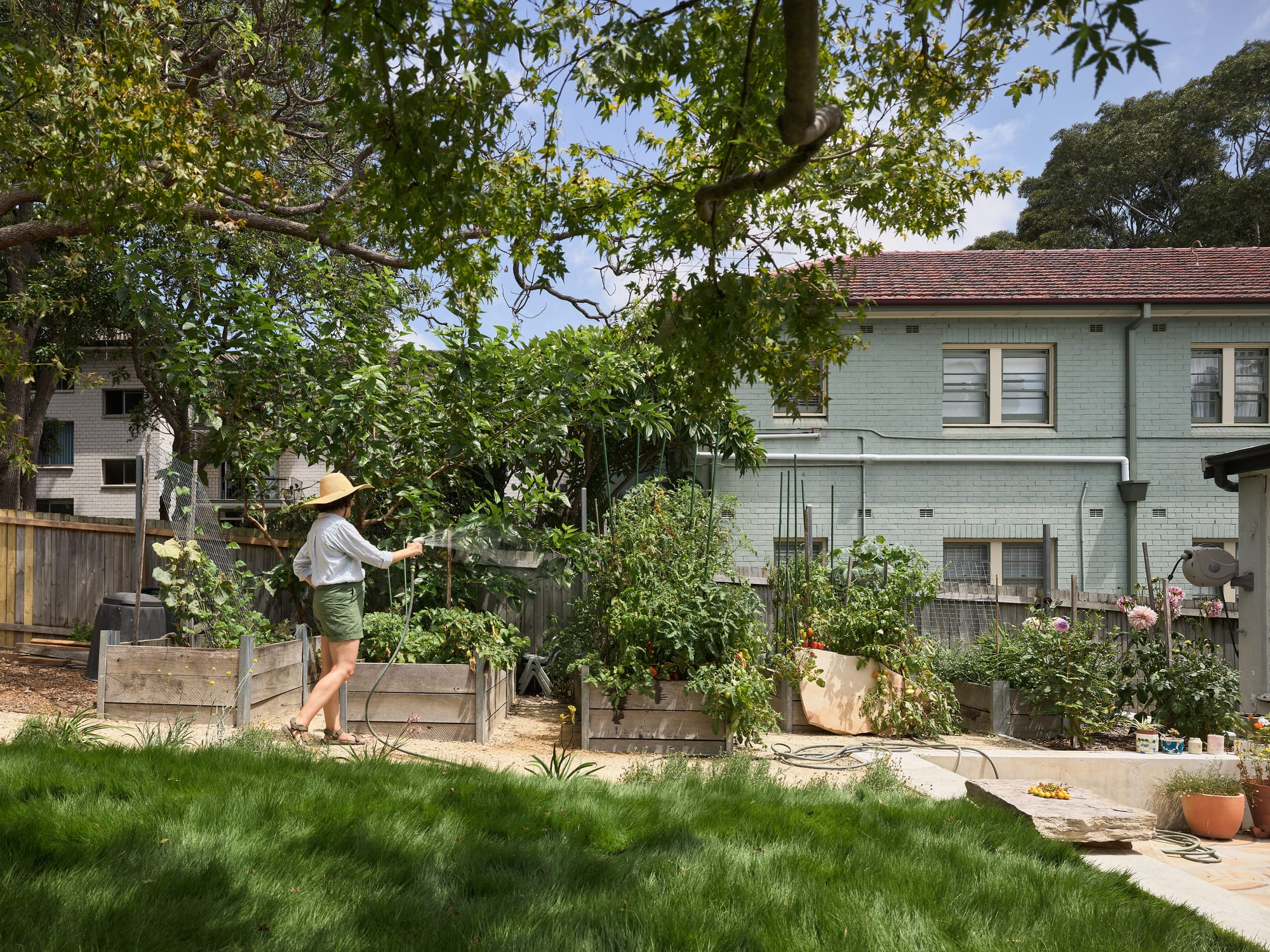
Coconut Crab embodies its mission, prioritising sustainability and conservation through environmentally conscious design and ceramic business it serves. This thoughtfully crafted space by Alexander Symes Architect reflects their commitment to environmentally responsible design, seamlessly integrating eco-friendly materials and energy-efficient technologies into a contemporary, suburban setting.
If you are interested in seeing more of the work by Alexander Symes Architect, you can head to their CO-architecture company profile to learn more about their team, studio and other exciting project like Pepper Tree Passive House.
PROJECT DETAILS
Location: Inner West Sydney, NSW
Architect: Alexander Symes Architect
Landscape Architect: Jason Monaghan
Photography: Barton Taylor
Builder: CASA Adams in collaboration with Nathan Wright
Engineer: Cantilever Engineers
This project article is part of CO-architecture's Sustainability Month where we champion the Architects, Designers, Brands, and Stays helping to shape Australia in this space. View all of the articles that are part of Sustainability Month here.
